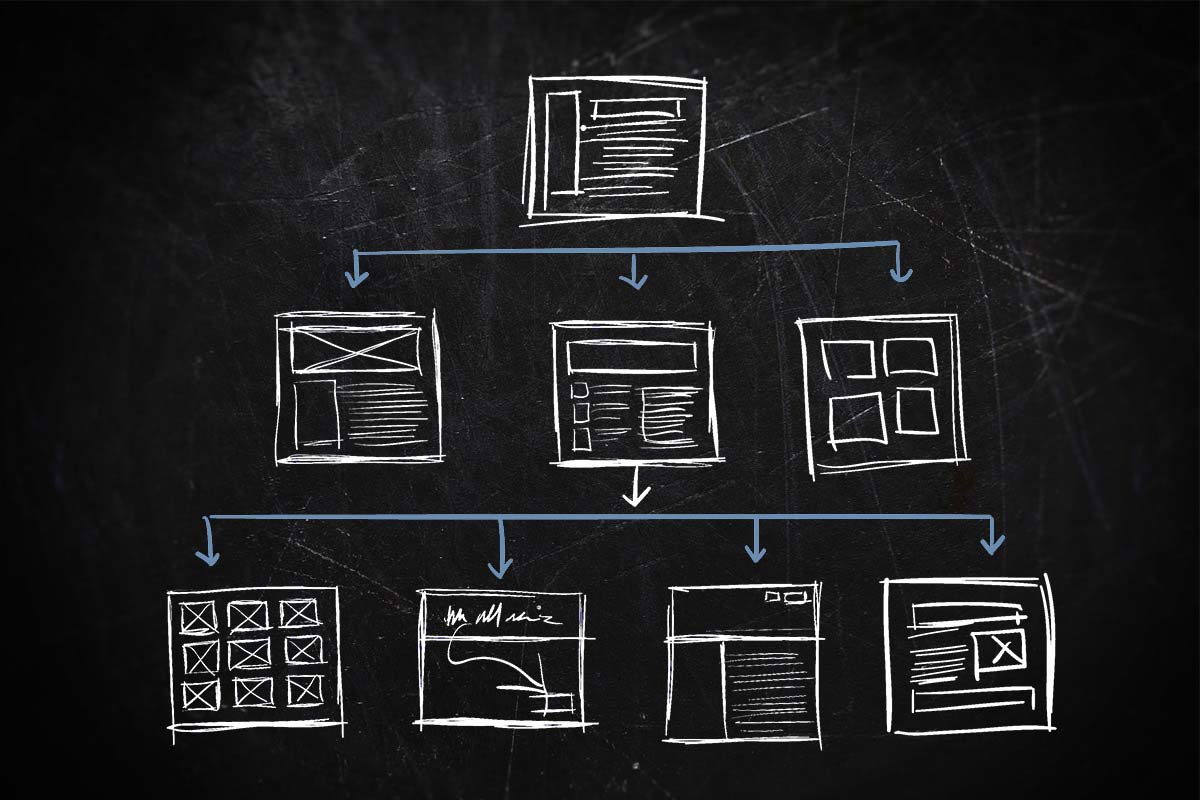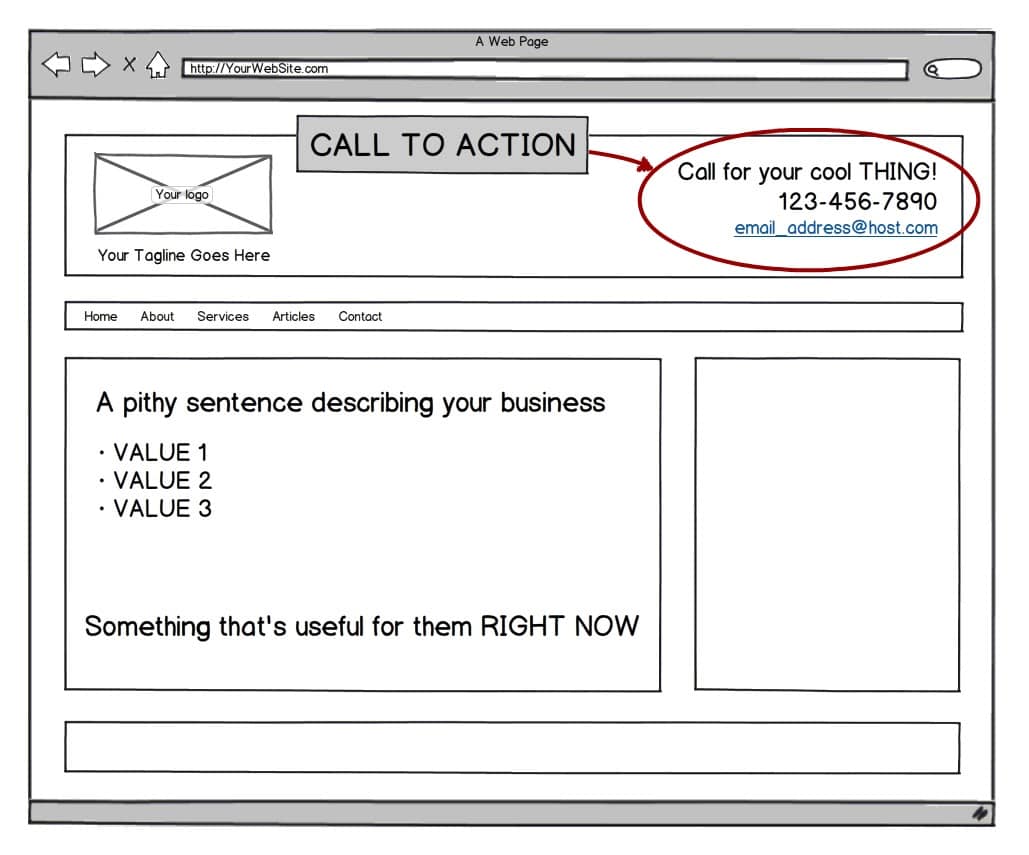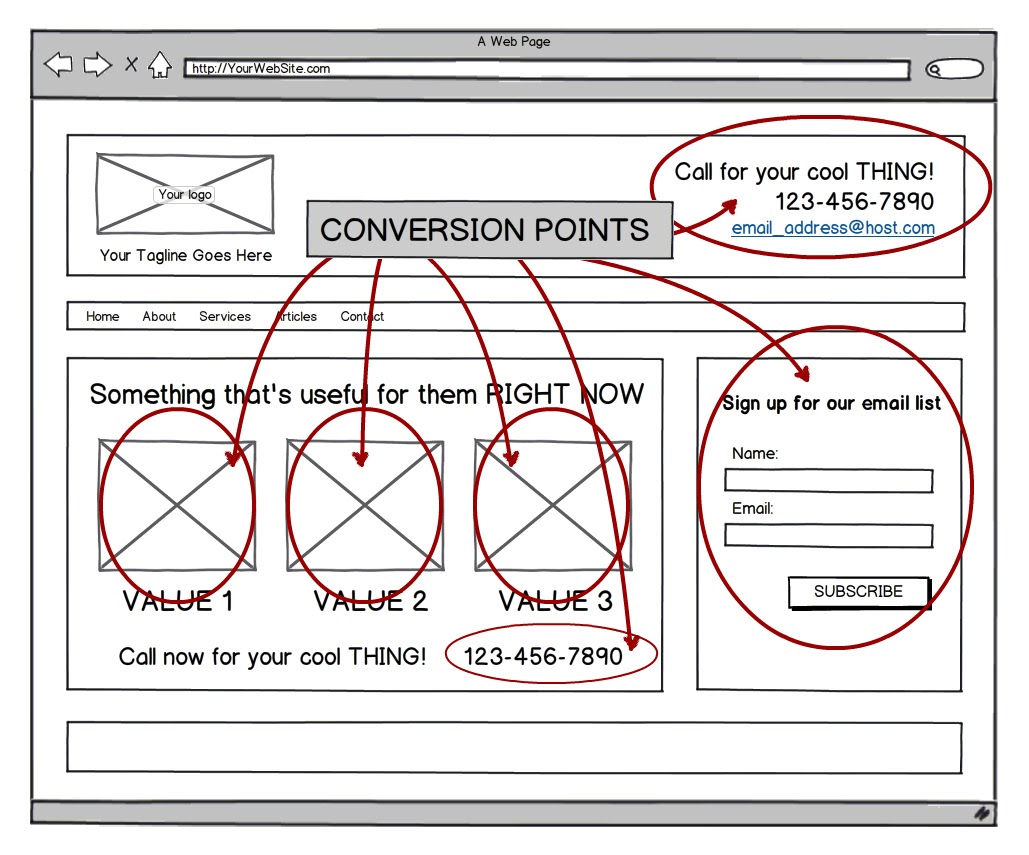5 Website Design Strategy Questions
5 Website Design Strategy Questions
This is the first of a series of articles focused on marketing strategies for nonprofits and entrepreneurs, including small businesses such as building trades professionals and wellness practitioners. Today we’ll look at website design strategy.
It’s All About Goals
The first step is to get really clear about the goal of your website by asking yourself the following questions:
- Who is my intended audience?
- What is the goal? A purchase? A call? A share on social media?
- If they don’t buy or call… What do I want them to do instead?
- Should I consider SEO strategies to drive traffic?
- Is it okay if they just want information?
That Seems Like a Lot
Answering all these questions seems like a lot of work, but the alternative is a website with no clear goal–which can leave a viewer unclear about their next step.
When you’re building a website, you want to think in terms of intended audience and the user’s goal(s) for each web page. Every page is going to be scanned by viewers for content, helping them decide what to do next: call, click away, or keep reading. They are looking for information to make a decision, “Should they buy your product or retain your services?”
What is the point of this page? Is it to inform? To get a sales call? Newsletter signup? Is the goal to generate search traffic from Google? It’s true, your website pages will be getting scanned by Google (and other search engines which aren’t very important because…well because Google won the Internet).
Website Conversion and Sales Strategy
Let’s imagine that your goal is to get a phone call. If you think about it, that may be the entire reason why you have a website. Heck, that may be the central goal of your entire online marketing strategy… so every single word, image, and button is either helping to make that phone call happen, or it’s just a distraction.
A good rule of thumb for calls to action (like the one pictured below) is:
- Put it at the top of every single page on the website
- Make your primary goal clear
- Make it easy to reach you (phone and email are both good)
- Remember: On top, clear, and easy… everything else is working against your goals.
But What if They’re Not Ready to Call?
A fair question. Then what?
You want to have some back-up, secondary goals. If they need more information, provide it in simple clear funnels that lead to information that’s pertinent to them. If they’re not ready to call, but maybe want to keep in touch, consider links to your social media or a form that will allow them to sign up to receive emails that you send periodically in a sidebar or footer.
Website Traffic Strategies and SEO
If your website will be designed with Search Engine Optimization (SEO) in mind, you’ll need to a setup a plugin like Yoast SEO and when writing your copy you will want to think about keywords and keyword density within the text. A great tool is the Google Keyword Planner, here’s a link to Google’s Keyword Planner Tutorial.
What if they just want information?
If your goal is to simply inform (which is awesome–I’m a strong advocate for education) you should allow that to be your goal and not distract yourself with salesmanship. Informational web pages dovetail well with SEO strategies because Google wants to make the Internet a better resource for getting people the information they need.
Getting Started On Your Website Design
We hope this article helps you build the best website in your industry. We’ve created a handy PDF for you to download and some next steps for success.
- Download our Website Design Kit
- Fill it out to the best of your ability
- Now start designing, OR
- Connect with Two Hats Consulting or a professional brand consultant to better understand achieving your business goals
This is the first of a series of articles focused on marketing strategies for nonprofits and entrepreneurs, including small businesses such as building trades professionals and wellness practitioners. Today we’ll look at website design strategy.
It’s All About Goals
The first step is to get really clear about the goal of your website by asking yourself the following questions:
- Who is my intended audience?
- What is the goal? A purchase? A call? A share on social media?
- If they don’t buy or call… What do I want them to do instead?
- Should I consider SEO strategies to drive traffic?
- Is it okay if they just want information?
That Seems Like a Lot
Answering all these questions seems like a lot of work, but the alternative is a website with no clear goal–which can leave a viewer unclear about their next step.
When you’re building a website, you want to think in terms of intended audience and the user’s goal(s) for each web page. Every page is going to be scanned by viewers for content, helping them decide what to do next: call, click away, or keep reading. They are looking for information to make a decision, “Should they buy your product or retain your services?”
What is the point of this page? Is it to inform? To get a sales call? Newsletter signup? Is the goal to generate search traffic from Google? It’s true, your website pages will be getting scanned by Google (and other search engines which aren’t very important because…well because Google won the Internet).
Website Conversion and Sales Strategy
Let’s imagine that your goal is to get a phone call. If you think about it, that may be the entire reason why you have a website. Heck, that may be the central goal of your entire online marketing strategy… so every single word, image, and button is either helping to make that phone call happen, or it’s just a distraction.
A good rule of thumb for calls to action (like the one pictured below) is:
- Put it at the top of every single page on the website
- Make your primary goal clear
- Make it easy to reach you (phone and email are both good)
- Remember: On top, clear, and easy… everything else is working against your goals.
But What if They’re Not Ready to Call?
A fair question. Then what?
You want to have some back-up, secondary goals. If they need more information, provide it in simple clear funnels that lead to information that’s pertinent to them. If they’re not ready to call, but maybe want to keep in touch, consider links to your social media or a form that will allow them to sign up to receive emails that you send periodically in a sidebar or footer.
Website Traffic Strategies and SEO
If your website will be designed with Search Engine Optimization (SEO) in mind, you’ll need to a setup a plugin like Yoast SEO and when writing your copy you will want to think about keywords and keyword density within the text. A great tool is the Google Keyword Planner, here’s a link to Google’s Keyword Planner Tutorial.
What if they just want information?
If your goal is to simply inform (which is awesome–I’m a strong advocate for education) you should allow that to be your goal and not distract yourself with salesmanship. Informational web pages dovetail well with SEO strategies because Google wants to make the Internet a better resource for getting people the information they need.
Getting Started On Your Website Design
We hope this article helps you build the best website in your industry. We’ve created a handy PDF for you to download and some next steps for success.
- Download our Website Design Kit
- Fill it out to the best of your ability
- Now start designing, OR
- Connect with Two Hats Consulting or a professional brand consultant to better understand achieving your business goals






